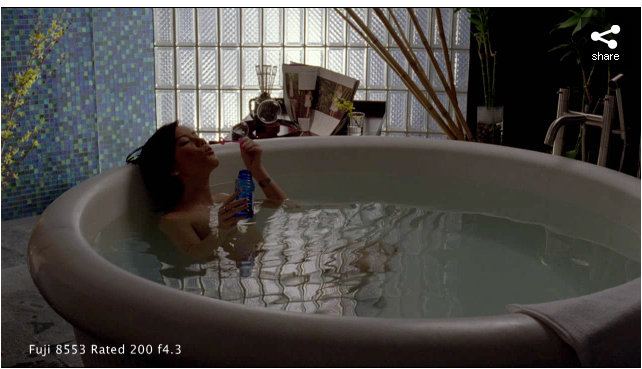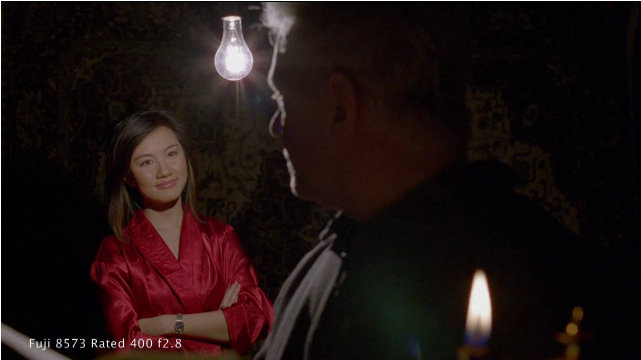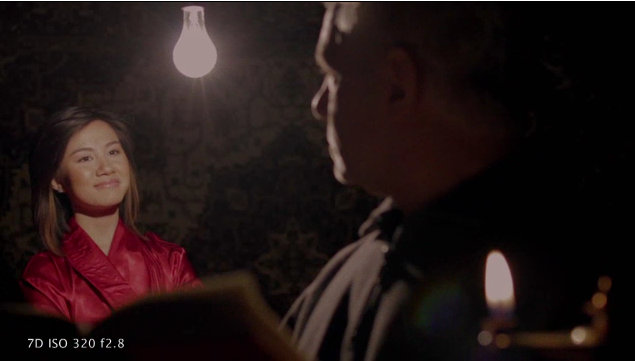So when people wonder just why the hell do I waste my time understanding my media I don't mind, clearly they don't know much about how to work with anything.
As a photographer we rely on media which now more than ever is changing rapidly, as a photographer I want to be able to make the best "go" at capturing something fleeting I can. Knowing my materials is critical to this.
So from time to time I examine what I have and what's around and try to see if I would benefit from this or that and how.
One of my friends recently pointed out this comparison to me
http://www.zacuto.com/shootout
which is a more detailed analysis over a greater variety of digital SLR cameras and a couple of films.
These guys did a world class job, working with the worlds best and showed their results to top cinema photographers. I encourage you to watch that video ... its a little 'long winded' but worth 30 minutes of your time.
Some things I observed from it, which I think seem to coincide with many of my own observations over the last year of examining my Panasonic G1 and film.
Now the purpose of their analysis (being cinematographers) was on colour rendition and contrast response to lighting (shadows and highlights).
I don't want to regurgitate their findings here, but I'd like to point out some things which I noticed and was not clear among the points which they brought out
First, looking at the the two film stocks (which of course are their reference as cinematographers)


Quite an amount of detail is visible in the patterns of the glass bricks behind the bath tub (why these guys always choose chicks in tubs is beyond me), but look at that part of the digital images.


just blown out ... (although it appears nicely in the reflections on the water), maybe thats what people are used to accepting with digital, and maybe its just a detail ... after all what artist would be interested in the details....
Everyone in their audience also thought that the results were really good. Putting aside for a moment this issue; if you were a small budget producer you could buy a 5DMkII for less money than you could hire an ARRI camera for a 3 week shoot.
That has to be attractive for any director / producer.
Then they did another scene. The topic of discussion was mainly about the light bulb ...


clear an "normal" in both of the film shots ... but in the digital's it looked washed out and nasty.


Every digital camera tested behaved like this ...
This is exactly consistent with my previous findings of how well film handles high key items like this:

Film:

Digital

as well as other examples, even HDRI

All very interesting.
 They discussed briefly in their "brain storming" discussion this concept and called it "blooming", I have my own theory of this. I feel that this is not only related to the sensor, but is related to the combination of anit-alias filters / IR filters / blah blah
They discussed briefly in their "brain storming" discussion this concept and called it "blooming", I have my own theory of this. I feel that this is not only related to the sensor, but is related to the combination of anit-alias filters / IR filters / blah blahI mean think about it for a moment.
The sensor on a digital camera has a number of layers over it for a variety of purposes (including protecting it).
Film is simply naked at the time of exposure, so there is nothing over it to flare up ...
More, film has this concept called an anti-halation layer which is specifically designed to prevent this happening at the deeper layer of the film as it's illuminated and perhaps glows internally.
I'd also suggest you look at the contrast of the images in the high key light of the naked bulb.
The digitals all show some sort of flare overall, which I'm suspicious is related to reflections from that shinny surface of the sensor and reflecting back to the back of the lens ... which is shinny too.
I feel there can be no way around this and its an inherent advantage of film, unless we can make sensors naked and matte in surface.
While your watching that video, I recommend that you keep an eye out for the way that the makeup on the model shows shinny cheeks more on the digitals than on the film and the ugly way that her face blows out as she approaches the bulb.

in comparison the film remained beautiful and faithful in the face of lighting adversity....

lastly I'll suggest you take some screen shapshots (as I did) and examine them yourself, because there are differences in the final balance that their colour guy got. The GH1 Panasonic was rated least hightly (although they were impressed) yet interestingly they managed to get its white whiter and a higher level than the other cameras tested.
Check the levels on the bulb in all the shots, only the film managed to make white and had the best control. Now this could be as a result of their WWW compression, or it could be something else (like effort needed to keep things under control in post production).
This was a very interesting test and there is much more information to be had that was directly presented. Perhaps they all yakked about it, but it would be nice if more of it was presented.










4 comments:
I had seen that "shootout" before and watched parts of it again. regarding the "blooming" I hadn't thought about the filters. One can usually pick out a digital sunset from across a large room...the sun has a bright yellow circle around it. I don't get this degradation with film and I get less or none at all with my foveon sensored DP1. I had thought it was the sensor. However now that you mention it the DP1 has no anti alias filter so...??
Charles
if you would be so kind as to take a photo of a light bulb with your DP1 I'd love to see it
I think this is partly caused by the Bayer filter itself in combination with the almost ubiquitous anti-alias filter.
I wonder what this would look like with the old Kodak pro14n or pro/slr: they had no antialias filter, only the Bayer one?
Ahh. A test. I will take that picture. My only remaining bayer camera (S-90) is in Europe with my daughter. I will do a test when she returns.
Post a Comment